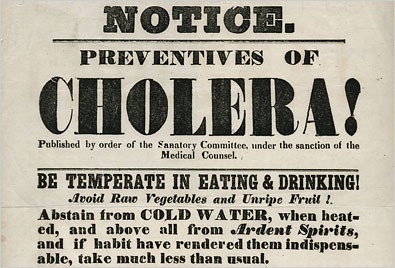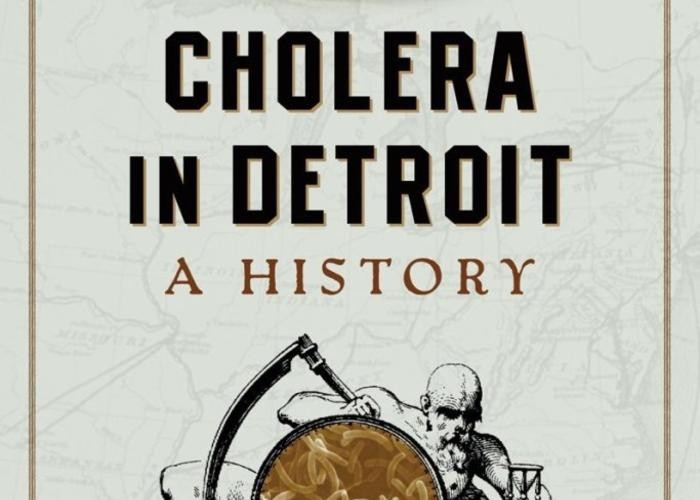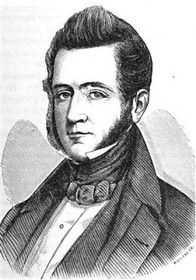Detroit Cholera Epidemic: 1832 and 1834
Introduction
Text-to-speech Audio
Images
Flyer for preventing Cholera during the second cholera pandemic (1829–51)

Cover for Richard Adler's book on the history of cholera in Detroit

The 1834 cholera outbreak killed the governor of Michigan territory, George Bryan Porter (featured here).

Backstory and Context
Text-to-speech Audio
How Cholera Arrived in Detroit
Many historical sources point to how cholera first entered Detroit, but to understand the relationship between society and cholera during the first few decades of the 19th century, it is important to examine the spread of cholera from city to city during those times.
Before cholera reached the city, Detroit was already making preparations. On June 25, 1832, when Detroit’s population was just over 2,500, the Detroit Board of Health responded to news of cholera spreading through Canada and the eastern US states by issuing instructions related to the prevention and cure of cholera. Detroit mayor Levi Cook and City physician Marshall Chapin also issued regulations for boat and ship traffic in the Detroit River. In these regulations, no ships from other ports could come closer than 100 yards to Detroit’s shores, and passengers could not disembark until inspection by a health officer. Also, none were permitted to cross from Canada to the city.
At the same time, Detroit residents were instructed to whitewash their homes, clean yards, fill or drain stagnant pools, and cut ditches. Despite all the preparations, however, the city was unable to prevent the first arrival of Cholera on July 4th, 1832. At the time, the United State army was fighting against Native Americans in the Black Hawk War, and on July 4th, the Henry Clay steamer carrying 370 troops stopped in Detroit. One soldier
Cholera in Detroit: 1832 and Gabriel Richard
Within weeks after the arrival of the Henry Clay, over 200 people were sick with cholera, and half of them died within days or even a couple of hours. Father Gabriel Richard, a hugely influential citizen who brought the first printing press to Detroit in 1809, was known to be everywhere at this time, and it was said that he was “indefatigable in the attendance on the sick and dying.” Father Richard eventually succumbed to the epidemic, and when it was over by the end of the summer of 1832, around 96 people, including Father Richard, had died in Detroit alone.1
Cholera in Detroit: 1834
The true devastation and cholera’s ability to spread and kill quickly, however, weren’t seen until August and September in 1834. That year, the population of Detroit was 3,500, but in August alone, cholera returned to Detroit and, almost immediately, killed between 7 and 10 percent of the population. Some reports claim 16 people died in one day.
In fact, it was a custom at that time to ring the church bells when someone died, but officials had to reverse this custom as the frequent ringing was leading to panic throughout the city. All doctors were authorized to dispense medicine; the poor were given medicine for free, and priests were instructed to dispense medicine to their poorer parishioners. Other people, however, had to purchase medicine.
By the end of September in 1834, nearly 700 people had fallen ill with cholera in Detroit. Business was virtually suspended, grass grew in the streets, and tar barrels lit aflame were scattered throughout the city, as people thought the burning tar would disinfect the air. Cholera would return to Detroit several more times from 1849 to 1865.2
